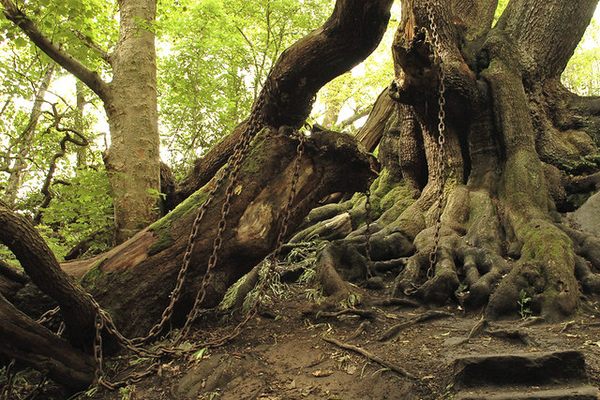About
The Zharkent area of Kazakhstan doesn't get a lot of tourists, so if you do happen to find yourself there, locals are likely to highlight one of the most important sights in their neighborhood: the Holy Elm Tree of Auliyeagash.
Auliyeagash, a village about 17 miles from Zharkent, is home to Kieli Agash, a holy tree (“Agash” means “tree” in Kazakh) rumored to be at least 700 years old. The number seven is key to the tree’s power. You may hear that the tree is 700 years old, that it sprang from seven roots, and that it takes seven people joining hands to encircle the tree.
Legends about the tree abound. According to one tale, a Muslim pilgrim once went to sleep under a dead, brown tree but when he awoke, the plant was alive and green. Other stories state that water springing from the roots of the tree is healing, that a visit to the tree cures infertility, and that somehow the tree saved people from invading troops led by Genghis Khan. If you are able to ask locals about these legends, you absolutely should—just don’t expect the stories to be totally consistent.
The approach to the tree is from the entrance arch, via a wooden walkway through a small park full of other, much younger, trees. Those trees are all bent over, many seemingly bending towards the main tree. Believers say this is because the smaller trees are all bowing to the older tree.
Nearing the tree you will see handkerchiefs and scraps of fabric tied to branches in tribute. At the bottom of the trunk, which may be swaddled in white fabric, is a hole filled with purported holy water, which people drink either for their physical or spiritual health.
The main attraction has undergone some rather severe trimming in recent years, in an effort to keep the rest of the tree alive and healthy. But even if the tree itself is a bit smaller than it once was, the park is quite peaceful and beautiful and the importance of the tree to the local community is very touching.
Related Tags
Know Before You Go
The village of Auliyeagash can be found by heading west from Zharkent towards Almaty and then turning right at Koktal, which takes you north towards Auliyeagash. Not far past the village you can find the entrance to the park marked with some metal railings and a small entrance arch. Colored pieces of fabric are tied to the gate, left by past pilgrims. Frankly, even with the best directions and great GPS, this might be a little hard to find without some help from locals. Fortunately, literally everyone in the area knows about the holy tree. Work out how to pronounce Auliyeagash and, as a back up, how to say tree in Russian (“derevo”). Then find a local to ask any time you worry you’ve lost your way or just want to check that you’re still headed in the right direction.
Community Contributors
Added By
Published
December 2, 2019























